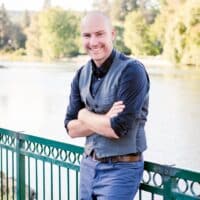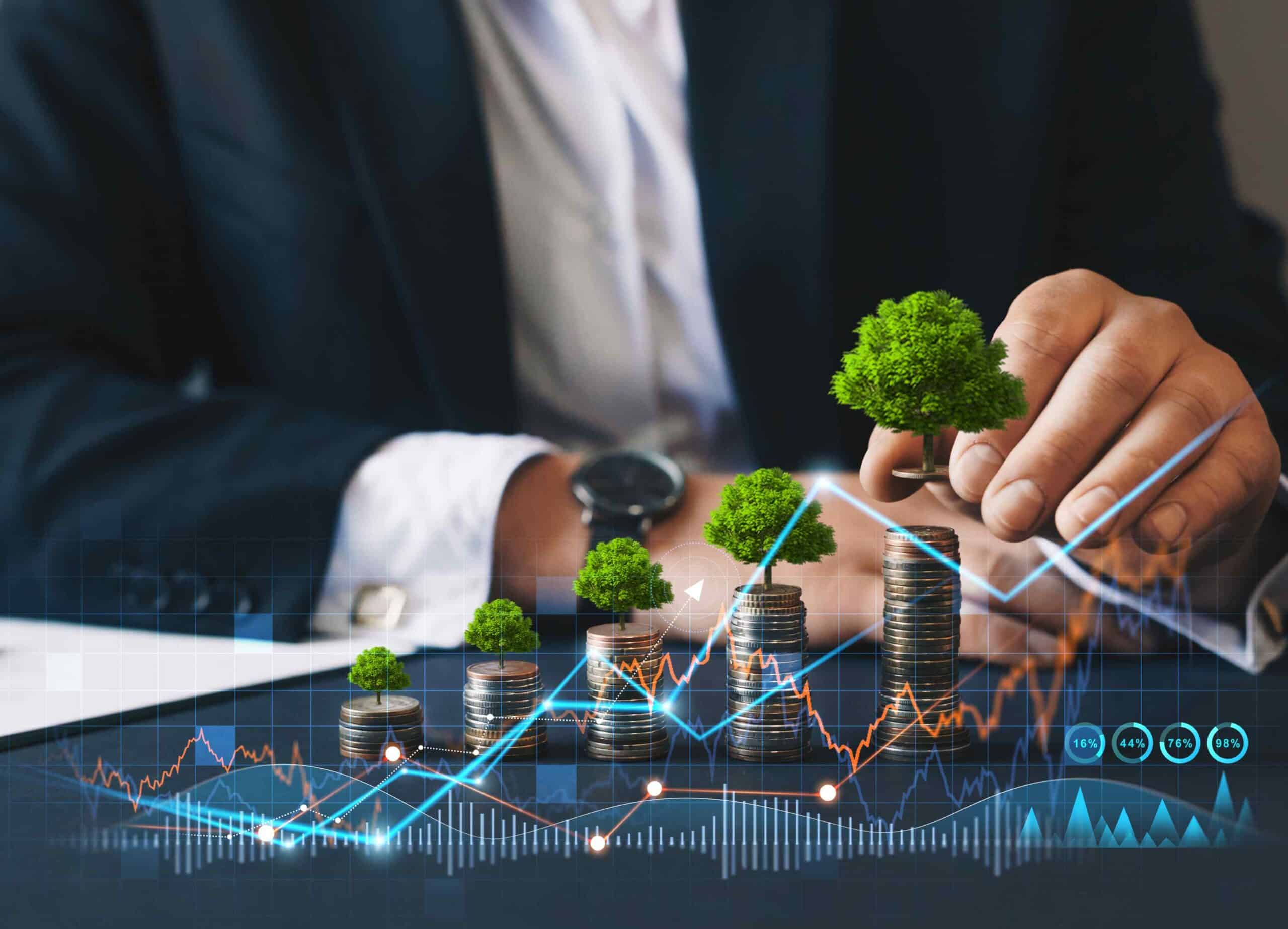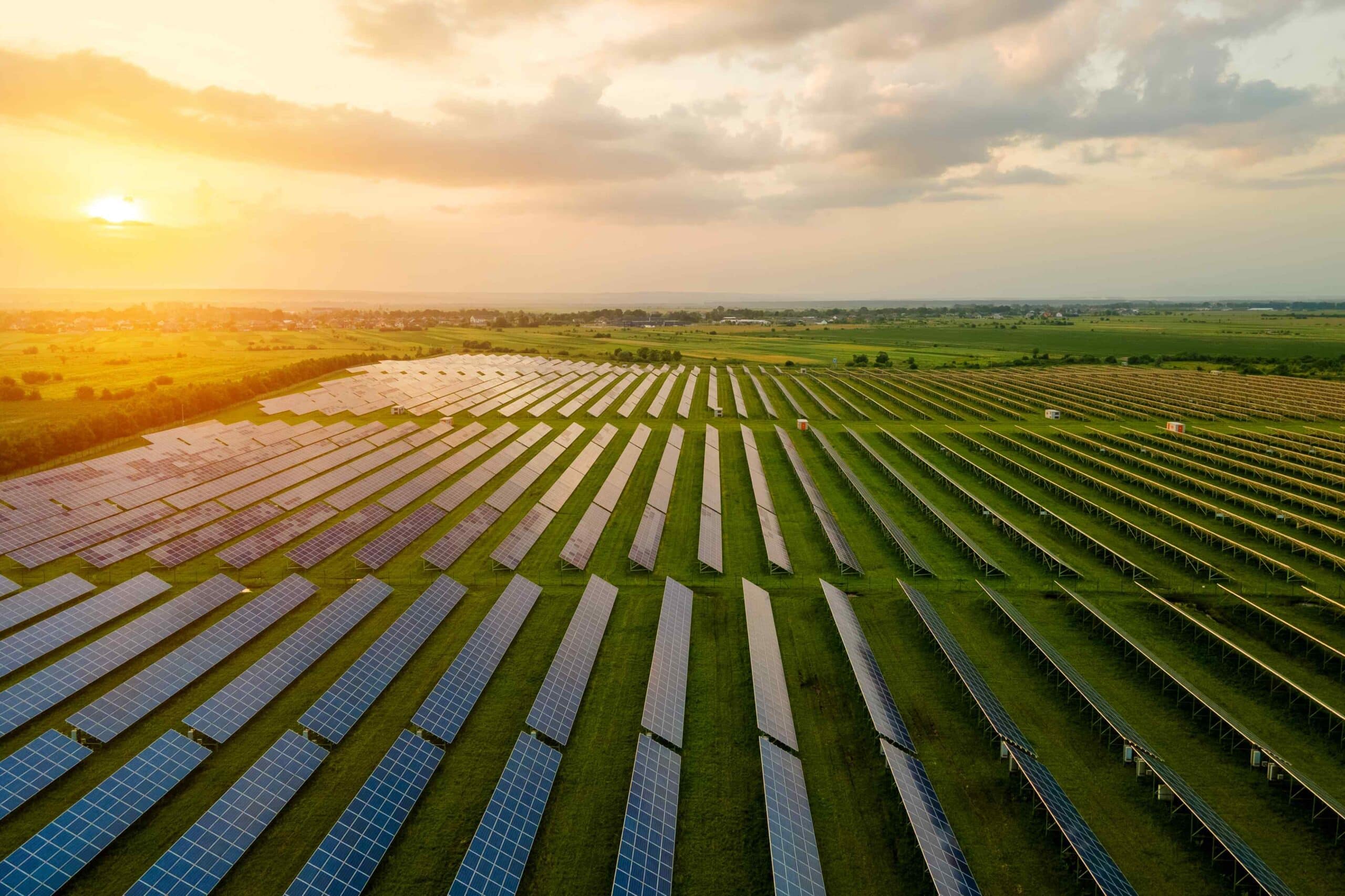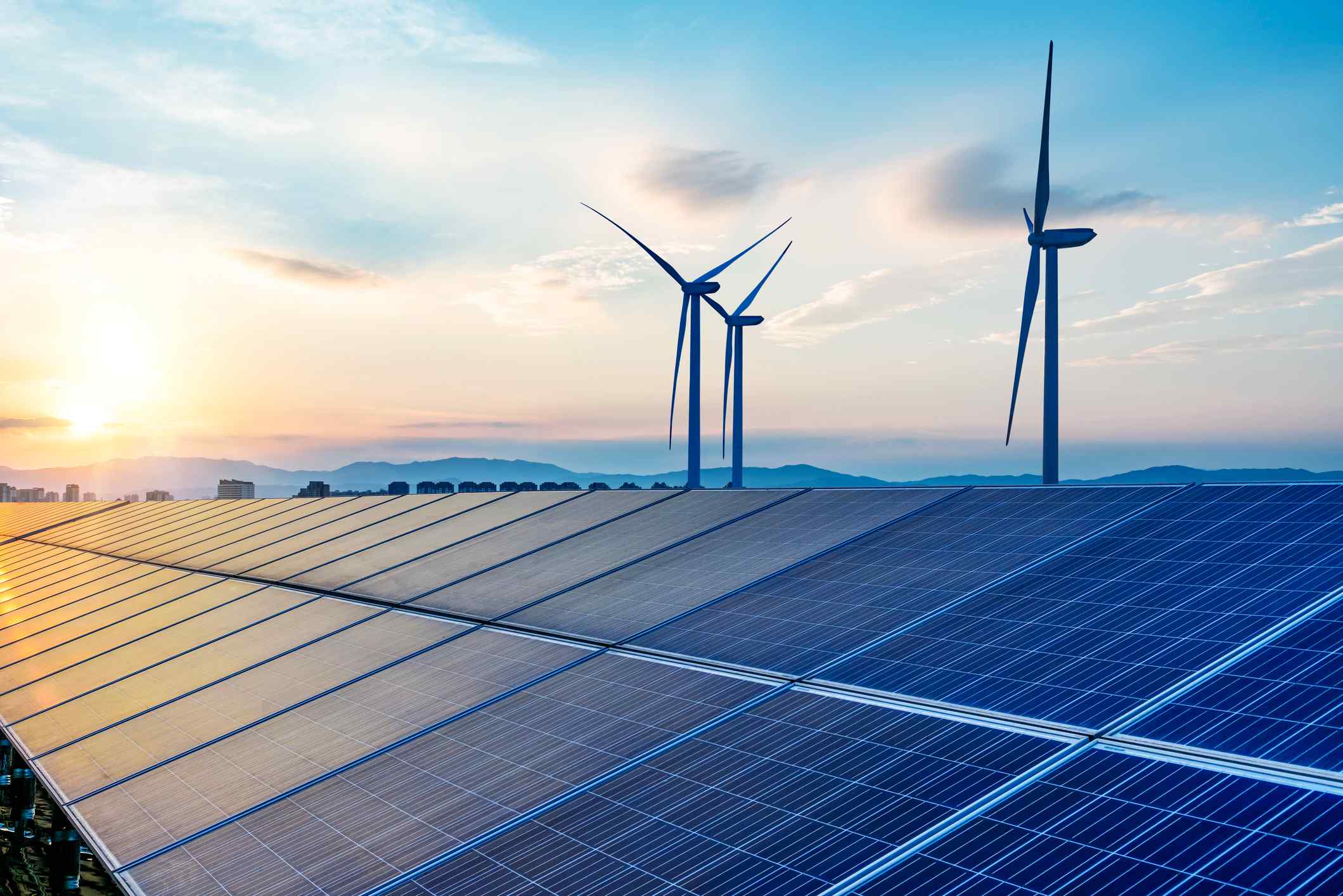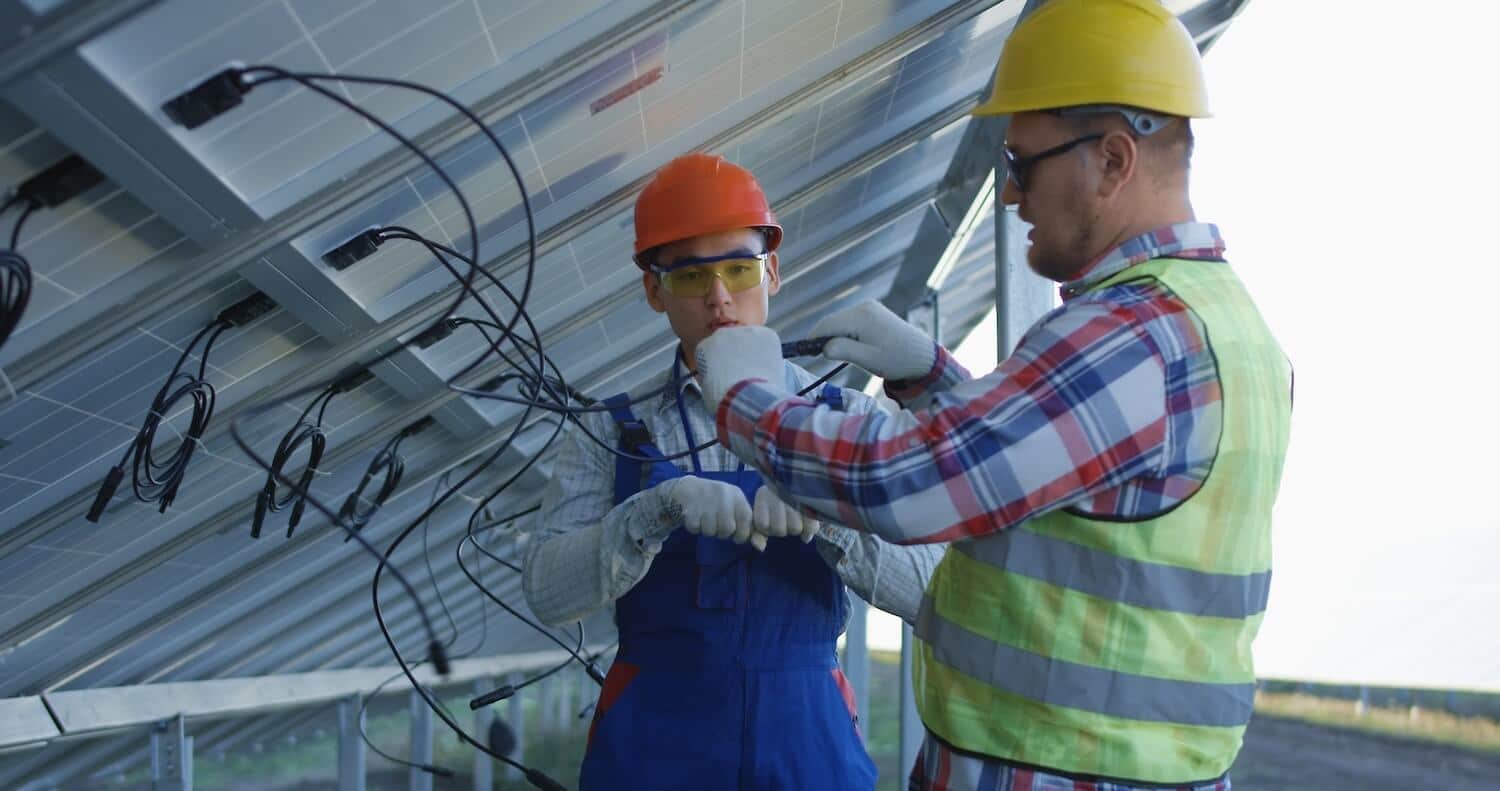POSTED
August 10, 2022
See Your Investment Dollars Go to Work in Clean Energy | Summit Power Fund | Shasta Power Interview
Max Roe one of the founders of Shasta Power sat down with Billy Fetzner from Green Business Impact to discuss how your investment dollars can go to work in clean energy. Read the full transcript of their interview below. This transcript was produced by Rev.com Billy: Are your investment dollars actually going to a good […]
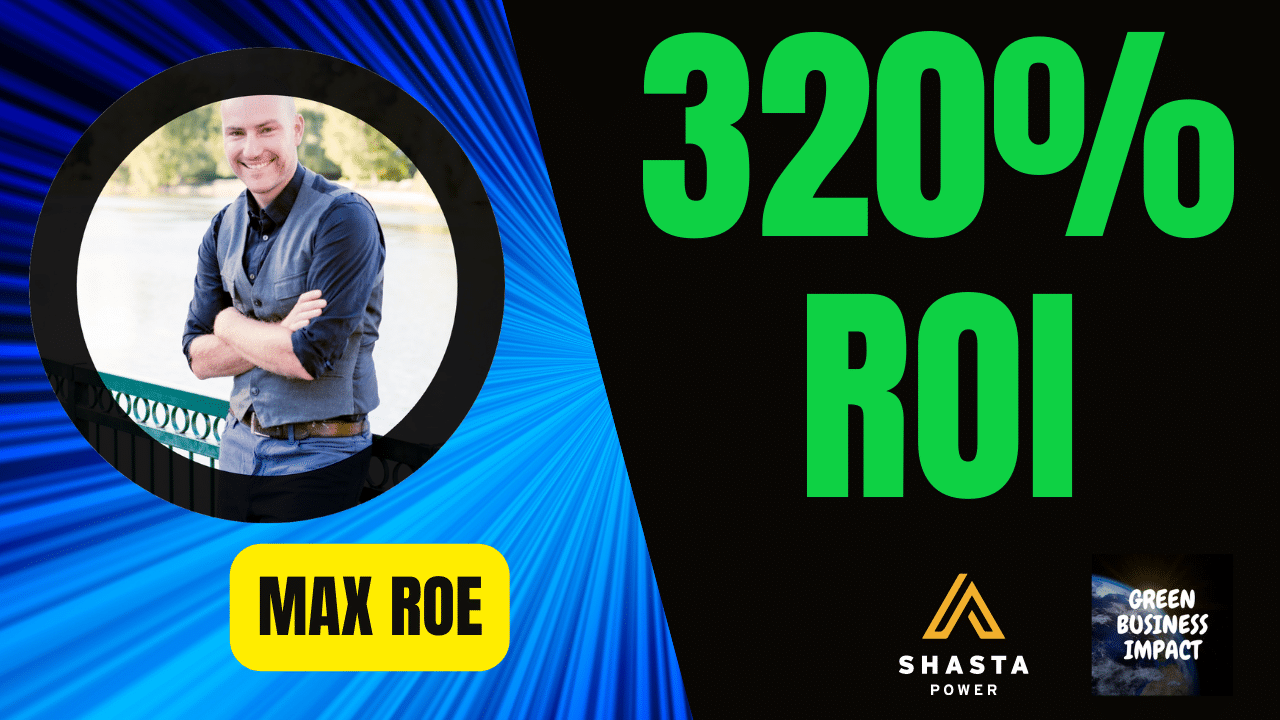
Max Roe one of the founders of Shasta Power sat down with Billy Fetzner from Green Business Impact to discuss how your investment dollars can go to work in clean energy.
Read the full transcript of their interview below. This transcript was produced by Rev.com
Billy:
Are your investment dollars actually going to a good cause when you invest in the stock market? It’s so easy to feel so disconnected when you just invest in stocks when you want to make an actual difference in the world. Because you’ve probably realized that you want to make a bigger impact and you want to actually see that investment that you put into these projects actually come to something, to actually amount to something.
Billy:
I got a chance to sit down with Max Roe. He’s a co-founder of Shasta Power. He and his team have created six previous funds and now are working on their seventh, the Summit Power Fund, to fuel three more renewable energy projects into creation. They have really created this fund for the people in the middle, those who aren’t ultra-high net worth individuals with enough capital to put together a whole entire renewable energy project, but those who do have enough to invest and who want to actually see their investment dollars making an impact, and also to see anywhere between 60 to 320% ROI. So make sure you stay all the way to the end to see how Max and his team are making this happen.
Billy:
Max, do you mind telling us a little bit about Shasta Power and what you guys do?
Max:
Sure. Shasta Power was a concept because we have been doing solar energy work for a long time, particularly around real estate, and we kept being approached by investors who wanted opportunities to invest in projects directly. And our team has been centrally focused on clean energy and climate impact work. And so because of the demand, we decided we wanted to create a company where people could invest directly in solar projects and maximize their climate impact with their investment dollars. That was the original concept. And it’s been in operation for a couple of years now and we just started originating projects in this new company very recently.
Billy:
Cool. So what has been the first project that you guys started?
Max:
We originated a project here in Oregon for a 679-acre site, which would be an 80-megawatt, utility-scale, photovoltaic project with an 80-megawatt battery component. If you run the numbers, you’re looking at maybe 40,000 houses, something like that, which would be powered with clean energy. I think one of the key concepts of Shasta Power is that we recognize there was a combination of factors that were just really forcing the market to grow. And there is an opportunity in the decommissioning of old fossil fuel technology, so a lot of coal plants are being shut down, oil and gas are still central to the energy market, but because a lot of those older facilities are being closed, existing infrastructure needs to be repowered. So the concept was to repower existing infrastructure with solar and battery components.
Billy:
Very cool. So there in, you said Oregon. Where do you guys have sites on any other places in the near future? Or where are you guys looking at right now?
Max:
Yeah, we have a number of prospective sites. We have another project that we’re targeting a 50-megawatt site in central Illinois, and then we have another site in Illinois that we are still working on land control for. So we are also working with landowners across a bunch of other states.
Max:
Because this is a newer company, its portfolio is a bit smaller than the team’s collective portfolio from previous ventures. So we bring a lot of history and skill into this new company, which is actually I think pretty exciting. I think, historically, if you want to get involved in utility-scale solar development, there’s not a ton of ways to do it, particularly as a retail investor of some kind, because the barrier to entry is very high if you want to, say, build your own project, it can be very expensive to construct, or complicated.
Max:
And I think the other avenue for investing other than trying to do something yourself is just the public market, so you could buy shares in X, Y, or Z company. And I think it’s tough for some people to see the direct link between their invested dollars and the impact. The concept here was to identify sites, pool all of the investor money together, and build those specific sites so that folks know exactly what they’re doing. We’re hoping to shore up those Illinois projects, and one in Missouri. We’re looking at sites, additionally in Oregon, New Mexico, Utah, and potentially Arizona.
Billy:
So really spread around in different areas. That’s really great. And so you’re pulling on multiple different backgrounds. What is your background specifically and what other backgrounds do your co-founders have that you’re all utilizing for this new venture?
Max:
Yeah, we have an amazing team. I guess, since you asked me, I’ll start with my background. I started in just construction in the trades, building things, when I was fresh out of high school and just put myself in the direct construction work, A, because I had experience from my childhood doing that work and I was coming of age during the great recession and there just wasn’t a ton of work to be found, but there’s always that kind of work to be had. That’s where I cut my teeth in the professional industry.
Max:
And that led to a passion in real estate and that passion in real estate led to property management. And I started managing a large portfolio of property in Colorado. And then I became less interested in just traditional asset classes and wanted to actually start having an impact and recognized that I could leverage some of my skills in real estate and project management and construction to start working toward a career in energy where I thought we could really make a big difference. And that’s where I got connected with John Copyak, one of the other co-founders of the company.
Max:
John, he’s done a number of different companies over the years. He had a similar sort of trajectory to myself, whereas he started with real estate investing and he would buy improved properties and then sell them at some sort of profit. And he had a similar epiphany one day that he wanted to have more of a positive impact with his work. And so he started aggregating land for renewable energy projects, wind, solar, these sorts of things.
Max:
So John and I connected, and from there, he and I have worked together for almost seven years now doing initially just land acquisition for projects, and then eventually developing our own sites. So our third founder, Boris Feldman is based out of Los Angeles and Boris is a little bit of a newer connection than John and I have known each other for a long time. We’ve known Boris, I think, for four years now. And Boris has done a ton of stuff within renewable energy. He’s really the development guru. He oversaw large acquisitions across a couple of well-known solar companies, so he has originated large projects as a part of the team for those companies. And Boris, after doing, I don’t know how many years he worked in the corporate world, but he started his own development company and that grew and then turned into a partnership with us. And so the three of us, all of our skills and history, started Shasta Power together.
Billy:
That’s really cool. And what is, in bringing this all together, the mission for Shasta Power going forward?
Max:
The mission is we see climate change as one of the single biggest challenges that humanity has ever faced. And we see clean energy as a big part of the solution to that challenge. And we have demand from investors who want to do good work. And not just demand from investors, but demand from, we call them ratepayers or consumers of energy who want clean sources of energy. So that sort of four-part pressure has created this opportunity, where this sort of demand and the supply and the interest and the need all come together. And so there’s a tremendous moment right now in time, and I think many people don’t recognize how monumental this shift is going to be.
Max:
And they may not even notice it, honestly. If you’re buying energy for your home, people don’t know or care for the most part where it’s coming from. What they care about, and rightly so, is that it’s there and that it’s reasonably priced. I think it’s hard to connect maybe climate change to those sorts of consumption. So on the other side, people want clean energy. I think the mission is to deliver as much clean energy to the market as possible and create opportunities for investors to do good work with their invested dollars because folks want it.
Billy:
Definitely. Like you said, there are those four pieces that are all coming together right now and it’s a perfect time and it really needs to happen too, because we can’t wait any longer for this just to sit around while climate change and all this stuff are happening right now. And with all of these things coming together, it’s also showing us that, hey, this opportunity is a great opportunity now to really start making a difference. And all these things we’re noticing with climate change, we can actually do some real good with it. I think you guys are doing a great job at getting out there and showing people, hey, if you want to make your investment dollars go somewhere further, actually go toward something that means more, then this is an opportunity to do, this is a place where you can invest those dollars and do good. So I think that’s really awesome.
Billy:
I saw on your website, that you say you guys have a hybrid model of being internally and publicly traded. What does that look like and why did you decide to go with that plan?
Max:
Yeah, it’s a great question. The mechanism is called a private placement fund. So it’s not actually a publicly traded fund. And I touched on this a little bit earlier. There are traditional funding mechanisms for these types of projects that are, I think, missing an area of the market. Funding number one is, and probably the most normal, is a large publicly traded company from the SE 500 or wherever has a bunch of shareholders, and they fund their projects just internally and they take out loans from banks. And then you do see small-scale projects where ultra-high net worth individuals or private companies that are not public but have a lot of money, just fund their own projects. And so there are limited opportunities for what we call the mom-and-pop accredited investor group of people.
Max:
And we can get into what an accredited investor is. If you want a definition around that, I’m happy to provide it. But it’s folks that basically are wealthy enough that they can invest a substantial amount of money, $10,000 or greater is typical, and an average might be 25 or $50,000 in a single point of investment. And that group of people has a limited number of places to put their money. And so we raise funds from, generally, that group of folks who wants to have a high impact with their money, but can’t quite afford to just build a project on their own, because it might cost a hundred million, but they could put $50,000 into a private placement fund and have an enormous impact.
Max:
We look up the sort of impact metrics in terms of carbon displaced, number of houses powered, and the number of jobs created. Those are metrics that people are looking at and we structured it that way because it’s the middle, it’s the middle of the spectrum of investing. Because of the truly publicly traded investments, you can buy in your 401k or you can buy $50 worth of shares, but there are plenty of products out there like that, and there are very few in the middle.
Billy:
That’s awesome. What is the estimate for an average type of return somebody could expect when investing with Shasta Power?
Max:
We like to talk in ranges because energy development is complicated and we expect to run into certain hurdles or even flaws where a project might not actually get constructed. You can find risk everywhere you look in any type of development, energy included like you’ve got environmental considerations and these sorts of things. So the range we provide on any given project is about 60% to 320% ROI. So if you invest a hundred dollars and you have a 320%, it’s $320 on that original 100 bucks, so that’s a large rate of return.
Max:
And then we break that down further and we say, what is our average annualized rate of return? Because the value of money today is more valuable than it is tomorrow, we add sort of a discount rate to that. And based on our track record, which is pretty extensive, this is our seventh fund offering. So we’ve done this, we’ve raised money and put it into projects for a long time. So our sort of annualized IRR, the internal rate of return is about 33%. So the target mark is about 33% after all is said and done.
Billy:
That’s great. And so you work on the investor side, but you also work with landowners. Can we dive into that side of things, too? And just introduce us to how that works with working with landowners and who specifically on your team works more with the landowners?
Max:
I love this topic. As you recall, that’s where both John and I started work in real estate, and so the land is an individual passion of ours and it is arguably the most critical component of any project. Without having access to land you can’t build anything. And so our landowner partners are hypercritical to what we’re doing. And because we’ve been landowners in previous funds for energy projects, we know what it’s like to be on the other side of these types of purchase option agreements and lease agreements. And we value those relationships a lot.
Max:
Because it’s such a central focus, one of our premises is just to treat landowners as if they’re actually partners and not adversaries. I think that we’ve experienced a lot of developers who treat their landowners as if they’re working against them or somehow obstructing their ability to do things. And we just have a different view, which is that we’re partnering with folks and many landowners in the United States in some of these regions where these projects are being built, have owned land for generations. And in many cases, they’ve been farming the land for generations. And these types of changes can feel intimidating, I think, to some people.
Max:
And so what we try and do is really take the time to sit down with people, meet with them in their homes, go to town halls with them and invite them and really bring them in on the conversation about how a solar project can benefit them and their community. I think an easy example, is on one of our Illinois projects, we have a competing energy facility. It’s a natural gas facility. And despite all of the marketing around natural gas, it is not in fact clean. It has lots of emissions and you imagine a multi-gigawatt, natural gas facility in your community of 5,000 people where you’ve raised generations of people and your family, that is very different from putting in a clean solar facility nearby.
Max:
And so part of it is just bringing folks in about the reality of what it would mean to power their community, or in some cases, power much larger communities outside of these rural communities, say. If you’re powering Chicago, a small town is not hyper excited about having a multi-gigawatt, natural gas facility, or even a solar facility in their backyard necessarily because there may or may not even have access to that energy. And so they feel that they’re being stomped on. And so we just communicate with people, we treat them like humans. We sit and talk with them. We make sure they know their partners and it’s not right for everyone, and we understand that. If at the end of the day you’ve been farming corn or wheat or whatever, or soybeans, and you want to keep doing that, we’re not going to guilt people. We’re not going to high-pressure salespeople. It either works or it doesn’t, it’s a partnership or it doesn’t work at all in our view.
Billy:
Definitely. It’s crazy when you think about just treating people like they’re humans and just being nice and that’s such a crazy idea, but it can be so foreign for some organizations. They always seem to just want to pick fights and things. People are people and you should just treat them as such. And I think you guys have the right way of they’re our partners and we’re trying to partner with them. And you guys will have a better relationship and a better movement forward without any of the animosity or anything going on. If you guys just treat it as a partnership, you guys will have a much brighter future than someone who you’re fighting with them all the time or something like that. So I think that’s really good, for sure.
Max:
We like to think so.
Billy:
Definitely. Are you mostly trying to incorporate land and partner with individual landowners? Or are you looking at large conglomerates or how does that work?
Max:
Just to step back. There are a number of factors required for any given piece of property to work… For a number of qualifications for a piece of property to even work for a project at all. So we start there. We have done anything from aggregating many landowners on one side of the spectrum, up to over 100 for a utility-scale project, which was [inaudible 00:16:55] up there in terms of the most landowners in any utility project, all the way to just working with one. One landowner might have a large enough farm or ranch or something where they can provide enough real estate to do an entire project, or you might need to add. And so what’s common though, is something in between, where you have maybe five to 20 landowners. And then it’s all about the scale of this project.
Max:
And scale is determined by existing capacity and demand. So if you have a substation and we do an engineering study and it says, you have 150 megawatts available at that, that will inform how much land in terms of physical solar panels you would need to power the existing infrastructure. And then from there, you do the math and say that you might need whatever, 1000 acres or 1500 acres. And then just the physical parcel size in that area will determine how many people that are going to be. So it’s complicated is basically what I’m getting at. And we made an attempt, at least, at explaining a little bit of how this works on some of our blog posts on our site because we do get this question a lot.
Max:
I get a call a few times a week. That’s I own 10 acres. I’d love to build a solar project on it. And the reality is that is not a thing that can happen usually because of all these other reasons. It was expensive. but we’ve just passed this infrastructure bill, and I think people forget, they see power lines all around and they say, “Why can’t you just connect straight to a power line.” It might cost you $5 million, to just connect to an existing power line. So it’s not like you can just tie in easily. And that’s even if the utility says, “Sure, please cut my power line in half and sell me a few kilowatts of energy.” That conversation doesn’t go well. So what you have to do is take all of this stuff together, pile it all up into a big heap in the middle and check all the boxes at once. But we love working with land owners once we’ve gotten through that first threshold of viability because at the end of the day, you can’t just throw it up on any site.
Billy:
That’s really good to know, especially just can’t be anywhere. And I had worked with a company that actually had a GIS program that went out and determined whether you could actually take a renewable energy project and plug it into the grid because there were lots of developers going out there and they were spending thousands and thousands of dollars just to look at the site. And then all of that to realize that they couldn’t even plug into the grid. So that’s a whole side to it as well.
Billy:
What are your goals for Shasta Power for 2022?
Max:
We have originated a couple of project sites. Our ultimate goal for the fund… So Shasta Power, and I don’t want to get too deep into the weeds on the structure, but Shasta Power is the parent company. And then the parent company owns a fund called Summit Power Fund. The fund is actually the investment vehicle where we’re building the projects, investors put their dollars. So that fund is raising $10 million. We’ve raised about a quarter of that, so 2.5 million. Our goal is to raise the rest of that, or as much of that as the market is interested in, and to have three projects that are ready to go to market. We have one that’s ready now. We have a second one that has land, but we haven’t submitted the interconnection. So we have one more project left. Basically, we want to originate one more utility-scale, 100 to 200-megawatt project, and then we take those and we do all the fun work of getting these things green-lighted to be constructed.
Billy:
Very cool. That’ll be great. Just coming upto the last few questions here. What are you currently learning right now?
Max:
I love this question. I think we touched on some of these things a little bit, but, that the demand is there from the market and from the people. We’ve learned that for years now, we’ve just been swimming upstream. It’s felt like we’ve been swimming upstream. But now I think we’re learning that all of the pieces are in place. That it’s ready. The time is right now. Climate change is not slowing down. If anything, our energy consumption is increasing. It’s accelerating. The time to act is right now.
Max:
The other thing I’m learning is that, and I think we’re all aware of this at a low kind of subconscious level, we’re much more price sensitive than we think we are. When everything’s going great, people are not freaking out. But when your gas prices are double or the price of bread is double, or you are running out of formula to feed your kids, these sorts of things. That this stuff impacts our lives and that climate change is going to, a, be expensive. It just is. The economists… the smartest people in the world tell us that climate change is going to be very costly. And so if we’re concerned about inflation, combating climate change in our lifetimes is potentially one of the things that we can do to save ourselves the most money. If you were to just break it down, it is that simple. And that it’s also going to impact all of these other sorts of things like supply chains, all these things that we’ve recently become all very steeped in.
Max:
These are the things that are keeping us active. I don’t want to say keeping us up at night, but keeping us active and what we’re trying to do as much learning around those subjects as possible.
Billy:
Definitely. We’re learning as much as we can so that we can make actions to these things less of an impact because we’re really trying to mitigate all these changes that are taking place. And I think climate change is showing us that there are so many examples of it happening right now, and that we can actually see, okay, this is happening. We predicted that this would be happening. Climate change got to this point and hey, here it is. We’re seeing these pieces of evidence all over the place. I think you’re hitting it right on the head there. It’s not that it’s keeping us up at night, because yeah, maybe it worries us, but it’s really about us taking action and keeping us active and keeping us working forward, which I think is really good.
Billy:
What is one way that somebody could, if they would like to reach out to you, what is one way to get in touch with you?
Max:
I think the best way to reach us is to visit our website at shastapower.com. There are great resources on there. Our phone number is listed there. There’s an email address, those sorts of things, a cool explainer video that will give you some of this, and an additional webinar where we talk about all this stuff in more detail. So visit our website and we’ll be happy to talk with people.
Billy:
Great. What is one tip that you would give another green business owner looking to grow their business? What is one tip that you would give them?
Max:
I think just take one step and action every day. We call it kicking the flywheel. It’s about generating momentum and keeping the momentum and recognizing you’re not in this alone, that many of us are in this fight together. Particularly with green investing. As I said, it’s felt like it’s been upstream, but I think that the tide, not to mix metaphors too much here, but it at least auto related that the tide is changing in the other direction. And that if you have an idea, just go for it, and that we’re all out here to support you.
Billy:
Awesome. Thank you. Thanks, Max, so much for coming on the show. I really appreciate it. And it was really great talking to you.
Max:
Likewise, Billy. I really appreciate it. And I love the work that you’re doing with the green business impact.
Billy:
Thank you. Appreciate it.
Billy:
And if you enjoyed listening to Max Rowe from Shasta power, I have a whole playlist of other companies that I have interviewed that you can sink your teeth into. In this playlist, you will hear all about all the possibilities with solar, including decentralization and community solar, among so many others. Because this is just the beginning of the potential of solar to fight against the climate crisis, so jump on into this playlist right now to learn more about the future of solar.
Love this content?

